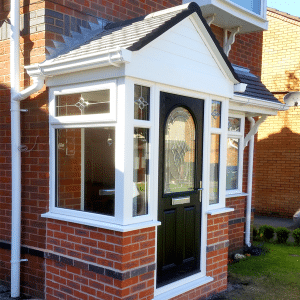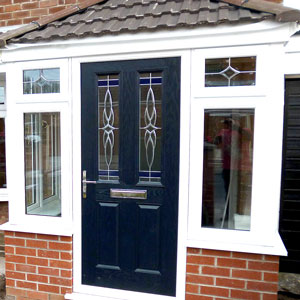Winter can make staying warm in a chilly house challenging, especially if your home lacks insulation or central heating. Fortunately, with a few strategic steps, you can maximise warmth without running up a hefty heating bill. From insulating windows to layering up, here’s how you can keep cozy and comfortable even in a cold house.
1. Insulate Windows and Doors
Windows and doors often account for significant heat loss in a home. As a result, cold drafts can enter through gaps, making rooms feel much colder. However, by insulating these areas, you can help maintain a warmer environment.
Tips for Insulating Windows and Doors:
– Apply Weather Stripping: Use weather stripping around doors and windows to seal any gaps and prevent drafts.
– Use Window Film: Apply insulating window film to help trap heat indoors. This film creates an additional barrier that keeps warmth from escaping.
– Hang Heavy Curtains: Thick, insulated curtains or drapes reduce heat loss through windows. Close them at night to trap warmth and open them during the day to let in sunlight.
2. Layer Up for Extra Warmth
Dressing in layers makes a noticeable difference in keeping warm inside. In fact, by layering up, you trap body heat more effectively, which keeps you comfortable without relying solely on heating.
How to Layer for Warmth:
– Wear Base Layers: Start with thermal or moisture-wicking base layers to trap heat against your skin.
– Add Sweaters or Hoodies: Wear comfortable sweaters, hoodies, or fleece jackets for an extra layer of insulation.
– Use Warm Socks and Slippers: Cold floors can chill you quickly, so wear thick socks and cozy slippers to keep your feet warm.
3. Use Space Heaters Wisely
Space heaters can provide concentrated warmth in the rooms you use the most, such as the living room or bedroom. However, choose energy-efficient models and use them wisely to prevent high electricity costs.
Effective Ways to Use Space Heaters:
– Place in Small, Enclosed Spaces: Use space heaters in smaller, enclosed areas rather than large, open rooms for better heat retention.
– Choose Energy-Saving Models: Look for heaters with energy-saving modes, timers, and thermostats that allow you to control the temperature and save energy.
– Position Safely: Place heaters on a stable surface away from flammable materials, and avoid leaving them unattended.
4. Seal Gaps and Cracks
Small gaps around windows, doors, and even walls can allow cold air to seep in and lower the indoor temperature. Sealing these cracks not only prevents drafts but also helps keep heat in.
How to Seal Gaps and Cracks Effectively:
– Use Caulk or Foam Sealant: Apply caulk around window frames, door frames, and any visible gaps to prevent drafts.
– Add Door Sweeps: Attach door sweeps to the bottoms of exterior doors to block cold air from entering.
– Check Around Pipes and Vents: Look for gaps around pipes, vents, and electrical outlets, and use foam sealant to close these openings.
5. Rely on Hot Water Bottles and Heated Blankets
For an inexpensive way to stay warm, use hot water bottles and heated blankets. Both provide direct warmth and help you stay comfortable without heating the entire room.
How to Use Hot Water Bottles and Heated Blankets:
– Warm Your Bed: Place a hot water bottle under your blankets a few minutes before bed to create a warm, cozy environment.
– Layer Heated Blankets: Use heated blankets or electric throws in the living room or bedroom to add warmth without cranking up the thermostat.
– Use Safely: Follow the manufacturer’s instructions when using heated blankets to ensure safety and efficiency.
6. Utilise Heat from the Sun
Natural sunlight provides free, powerful warmth during the day. Take advantage of this by letting sunlight enter your home and warm up your living space.
Tips to Capture and Retain Sunlight:
– Open Curtains and Blinds: Open south-facing curtains and blinds during the day to let in sunlight, which warms up the room naturally.
– Close Curtains at Night: Once the sun goes down, close your curtains to trap the heat inside and prevent warmth from escaping.
– Clear Obstacles from Windows: Remove any furniture or items blocking windows to let in as much sunlight as possible.
7. Create Micro-Warming Zones
Instead of heating your entire home, focus on creating “micro-warming zones” in the areas where you spend the most time. This approach saves energy and keeps you comfortable.
How to Create Warm Zones:
– Close Off Unused Rooms: To conserve warmth, shut doors to rooms you don’t use often; this way, you can concentrate heat in your primary living spaces.
– Add Area Rugs: Place rugs in your primary living areas to help insulate floors and prevent heat loss through the ground.
– Focus on Your Bedroom and Living Room: Make your bedroom and living room as warm as possible since you likely spend the most time there.
8. Cook and Bake More Often
Using the oven or stovetop releases heat into the kitchen, creating a warm and inviting space. Not only will cooking warm up your home, but it also provides you with hot meals that help you stay cozy.
Ways to Generate Heat in the Kitchen:
– Bake Comfort Foods: Baking bread, casseroles, or other comfort foods warms up the kitchen and creates a cozy atmosphere.
– Use the Stovetop: Simmer soups, stews, or hot drinks to keep your kitchen warm while cooking.
– Keep Oven Doors Open After Baking: After you turn off the oven, leave the oven door open to release the remaining heat into your kitchen.
Conclusion: Make Simple Adjustments to Stay Warm
Keeping warm in a cold house doesn’t have to mean high heating bills. By insulating windows and doors, sealing gaps, layering up, and utilizing natural sunlight, you can stay comfortable without excessive heating. Use these strategies to create a warmer, cozier home during the winter, and enjoy a comfortable environment even on the coldest days.











